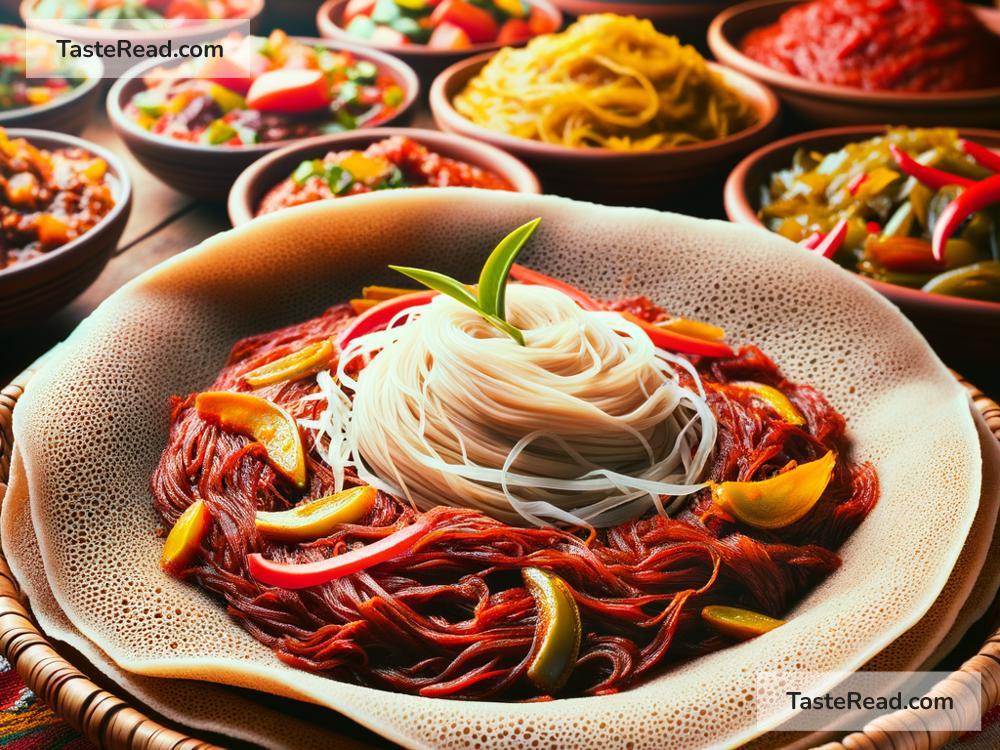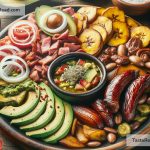Title: Journey Into the Exotic Tastes of Ethiopian Injera
Welcome to a culinary adventure that’s bound to excite your taste buds and introduce you to an entirely new world of flavors! Today, we’re diving into the heart of Ethiopian cuisine by exploring one of its most famous and cherished dishes – Injera. This traditional Ethiopian staple is much more than just food; it’s a cultural emblem that brings families and communities together. So, grab your virtual passport, and let’s embark on a flavorful journey into the world of Injera.
First, let’s talk about what Injera actually is. Imagine a soft, spongy, and slightly sour flatbread with a unique texture that’s somewhere between a pancake and a crepe. Made primarily from teff flour, which comes from a tiny grain native to Ethiopia, Injera is not only delicious but also packed with nutritional benefits. Teff is rich in calcium, iron, and protein, making Injera a healthful choice for any meal.
The Magic of Injera
One of the most fascinating aspects of Injera is its preparation. The process begins with mixing teff flour with water and allowing it to ferment. This fermentation process, which can take several days, is what gives Injera its distinctive sour taste and light, airy texture. Once the batter is ready, it’s spread thinly over a large circular griddle, known as a mitad, and cooked until the edges lift off, revealing a bubbly surface underneath. The result is a warm, inviting bread with a taste like no other.
But Injera is much more than just bread. It’s the foundation of most Ethiopian meals, serving as both a plate and utensil. Picture a large piece of Injera spread out on a platter, with a variety of flavorful stews, known as wot, and salads placed on top. Diners traditionally eat with their hands, tearing off pieces of Injera and using them to scoop up the food. This communal style of dining highlights the Ethiopian tradition of sharing meals and fostering connections among friends and family.
Exploring the Flavors
Now, let’s talk about the flavors that accompany Injera. Ethiopian cuisine is known for its rich, complex, and often spicy dishes that are loaded with an array of spices and herbs. One of the most iconic dishes served atop Injera is Doro Wot, a spicy chicken stew simmered in a blend of onions, garlic, ginger, and a key spice blend known as berbere. This combination of spices gives the dish its deep red color and intense flavor.
Vegetarians and vegans rejoice, for Ethiopian cuisine is incredibly accommodating to plant-based diets, and many dishes served with Injera cater to these preferences. Lentils, chickpeas, and a variety of vegetables are transformed into delicious stews and salads with the magic of Ethiopian spices. Misir Wot, a spicy red lentil stew, and Shiro Wot, a creamy chickpea flour-based stew, are just a couple of examples that showcase the versatility of vegan-friendly dishes that pair perfectly with Injera.
But the experience of Injera is not complete without mentioning tej, a traditional Ethiopian honey wine often consumed alongside meals. Its sweet and slightly tangy flavor offers a delightful contrast to the spices and can help soothe the palate after sampling some of the hotter dishes.
A Gateway to Ethiopian Culture
To truly appreciate Injera is to understand its role in Ethiopian culture. Beyond its nutritional and culinary importance, Injera symbolizes hospitality, warmth, and a sense of belonging. Being invited to share a meal of Injera is considered a gesture of friendship and respect. This reflects the underlying principles of Ethiopian society, where community and family ties are deeply valued.
In today’s globalized world, one doesn’t have to travel to Ethiopia to experience the wonders of Injera. Many cities across the globe offer Ethiopian restaurants where you can sample this exquisite cuisine. However, if you’re feeling adventurous, making Injera at home can be a rewarding experience, allowing you to bring a piece of Ethiopian culture into your kitchen.
Whether enjoyed in a bustling restaurant or the comfort of your home, Injera offers a unique tasting experience that bridges cultures and transcends borders. It’s a beautiful reminder of how food can connect us, tell stories, and introduce us to new worlds of flavors. So, go ahead, dive into the exotic tastes of Ethiopian Injera, and let your palate explore the rich and vibrant tapestry of Ethiopian cuisine.


